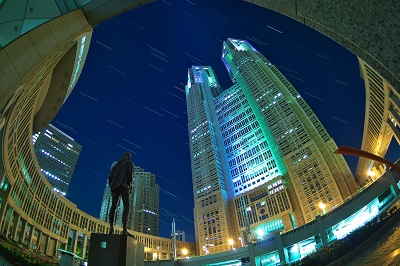Shinjuku
last update: July 06, 2019
Shinjuku (新宿) is one of the 23 "special ward" of the city of Tokyo, and is as large as many medium-sized cities around the world. However, in common parlance, the term "Shinjuku" refers to that area around Shinjuku station, the busiest railway station in Tokyo and the whole world. In its surroundings, you can find the largest business district and the largest shopping and entertainment district in Tokyo.
Attractions and things to do in Shinjuku
Given the size and complexity of the area, it is a good idea to divide Shinjuku into several smaller areas, taking
Shinjuku Station and the railway tracks crossing the area as a reference point. On one side the business district, on the other the entertainment area.
 Shinjuku station is the busiest railway station in the world. Before going to Shinjuku for the first time, it is very useful to try to understand about the various exits of the station, so as not to get lost. The station is so large that above it there are seven different shopping centers and department stores.
Shinjuku station is the busiest railway station in the world. Before going to Shinjuku for the first time, it is very useful to try to understand about the various exits of the station, so as not to get lost. The station is so large that above it there are seven different shopping centers and department stores.
Shinjuku station guide.
East Shinjuku - East exit/East Central Exit of Shinjuku station
This side is
Shinjuku's shopping and entertainment paradise, with thousands of shops and restaurants of all kinds. The biggest department stores are
Lumine Est, in the building built right above the station, and
Isetan.
Here you will also find
Bicqlo, a unique store throughout Japan, the result of collaboration between
Uniqlo (famous fashion) and
Bic Camera (chain of electronics stores).
All the most famous areas of Tokyo's wild night-life are located on this side: the
largest red light district in Japan and
the largest gay district in Japan.
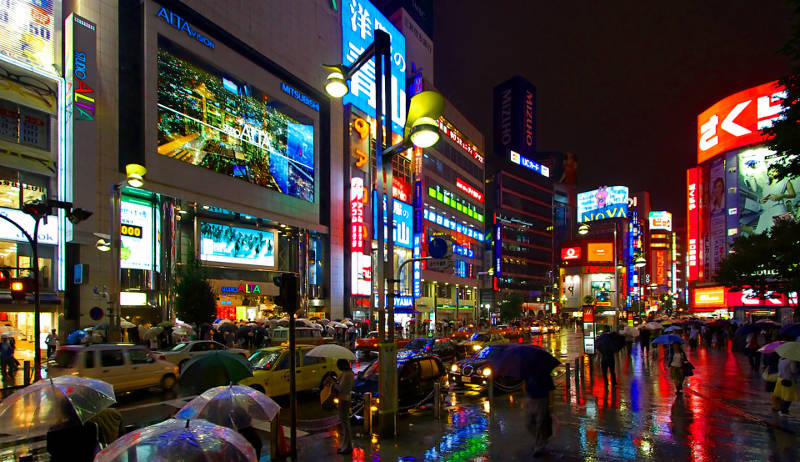 Studio Alta, in front of the exit exit of Shinjuku station, it is one of the most popular meeting points in Shinjuku
Studio Alta, in front of the exit exit of Shinjuku station, it is one of the most popular meeting points in Shinjuku
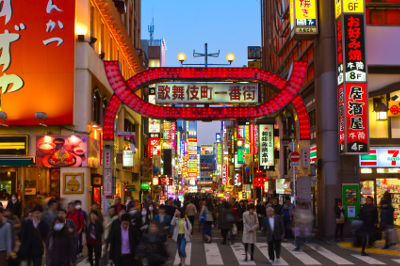 Kabukicho is the largest red-light district in Tokyo and throughout Japan. You enter the neighborhood through a characteristic red illuminated sign, about 300 meters from the east exit of Shinjuku Station. It houses countless restaurants, bars, nightclubs, pachinko parlors, love hotels, and of course a lot of red-light establishments for all sexual tastes.
Kabukicho is the largest red-light district in Tokyo and throughout Japan. You enter the neighborhood through a characteristic red illuminated sign, about 300 meters from the east exit of Shinjuku Station. It houses countless restaurants, bars, nightclubs, pachinko parlors, love hotels, and of course a lot of red-light establishments for all sexual tastes.
In recent years many tourist attractions have opened: the samurai museum, Godzilla's giant head, the Robot Restaurant.
There is too much to say about Kabukicho, read the complete Kabukicho travel guide to discover more about this incredible place.
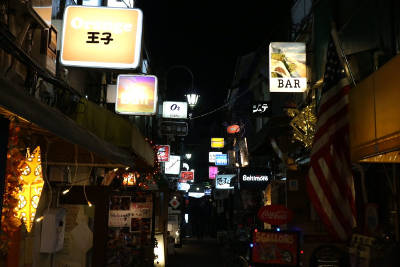
Golden Gai
A stone's throw from the crowded and super-lit streets of Kabukicho, lies Golden Gai, where one has the feeling of going back a few decades. There are a few very narrow streets, full of very small bars, and "very small" means up to 5-10 seats, where you go for a drink in the evening (most of them open around 20-21). The area has a very special and "intellectual" atmosphere, and in fact it is said to be popular among artists, writers, directors and people like this.
Traditionally, these small pubs are frequented mostly by regular customers, and hardly accept strangers, least of all tourists. The situation has evolved in recent years with the boom of tourism in Japan, and now more and more pubs have started to display menus in English outside to attract tourists. Anyway, the best is to go with a Japanese friend.
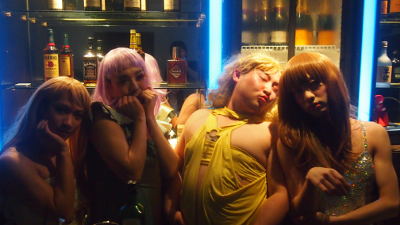
Shinjuku Ni-chōme
Shinjuku Ni-chōme, often called just Nichō, is the center of Tokyo's gay community. According to some statistics, it could be the area with the highest concentration of gay clubs in the world.
The neighborhood is home to a myriad of bars, restaurants, cafes, saunas, love hotels, boutiques, host clubs, pubs, discos, massage centers, bookstores and video store all catered to homosexual people.
There are about 300 clubs are in the area. Most of them generally have no more than 10-15 seats and are "specialized" in a certain type of homosexual clientele. There are places for the bear community, for lovers of BDSM, for lovers of muscular men, for young people, for lesbians, etc.
Not all places are open to foreigners, and some may even prohibit entry. Conversely, there are some clubs and pubs that are very famous right because they are popular among foreigners (for example: Advocates, Arty Farty, Dragon, GB and Rehab).
West Shinjuku (Nishi Shinjuku) - West exit of Shinjuku station
This is the area of the
business district of Shinjuku (commonly called
skyscraper district). If you come to this area in the morning you will find thousands of women and men in suits walking like robots to their offices. In the evening, however, after most of offices close, the streets become a desert, and you can enjoy a silent walk surrounded by the stunning lights of the huge skyscrapers.
Conversely, the street next to Shinjuku station is always crowded. There you can find a number of department stores:
Keio,
Odakyu,
Lumine and
MyLord. In the narrow streets in front of the station, before the skyscraper district, there is a small area with many restaurants and some shops, including a huge
Yodobashi Camera (chain of electronics stores).
However, on the other side (
East Shinjuku) there are far many more shops and restaurants.
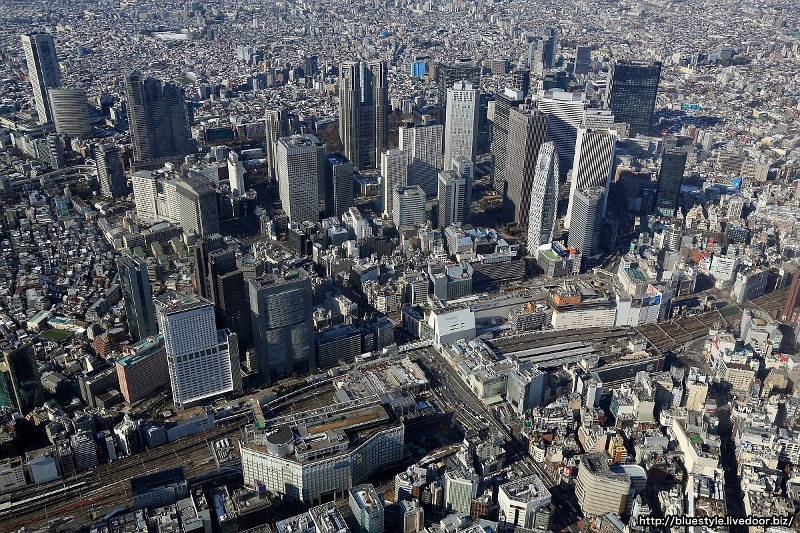 Shinjuku's skyscraper area from above (credits)
Shinjuku's skyscraper area from above (credits)
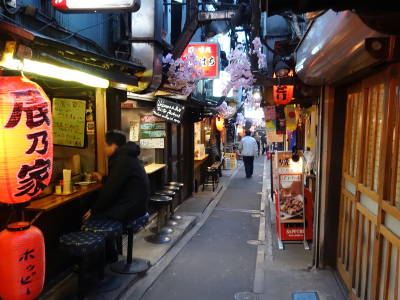
Omoide Yokocho
An alley next to the railroad tracks, a few meters from the west exit of Shinjuku station. Here there are several very simple restaurants with very few seats, very popular with office workers, coming here with coworkers. The most typical dishes are ramen and yakitori, together with beer and other spirits, to quickly forget the day's work.
The area has a very characteristic atmosphere that will surely make any foreigner fall in love with it, but in recent years it has become a very tourist place and has lost part of its original charm. Food is average.

Sumitomo Building
A memorable triangular skyscraper in Shinjuku. It was the first skyscraper to be completed in 1974 of the mega-project of the Shinjuku business district. For a few months, it was the highest skyscraper in Japan (210 meters), until the Shinjuku Mitsui Building was completed.
The top 5 floors of the skyscraper are open to the public and host a number of restaurants of Japanese and international cuisine. A great place to go if you are looking for a restaurant with a panoramic view. Prices at dinner are quite high. On the contrary, at lunch they are quite reasonable. If you're interested in it, take a look at the list of restaurants.
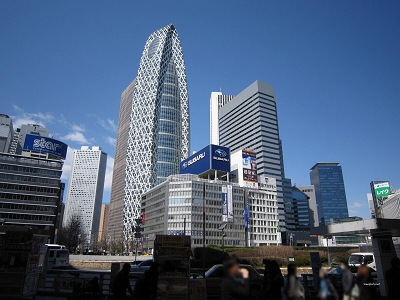
Mode Gakuen Cocoon Tower
One of the newest skyscrapers on Shinjuku, completed in 2008. The building is famous for its particular architecture, thanks to which it has won several international awards. The interior houses three universities, and, for this reason, it holds the record of the second highest "educational building" in the world after Moscow State University in Russia. The interior cannot be visited, so there is little to do besides looking at it from outside.

Shinjuku L Tower
A small skyscraper (121 meters high) in front of the east exit of Shinjuku station. Nothing special to report, except for a Nikon showroom on the 28th floor of the building (Nikon Plaza Shinjuku).There you can take a look at the current photographic exhibitions being hosted (free admission), at all Nikon prodpanoramic view. More information on the Nikon Plaza Shinjuku. You can find another similar showroom in Ginza.
Until a few years ago in this same skyscraper there was also the Toto showroom, now moved to another building.
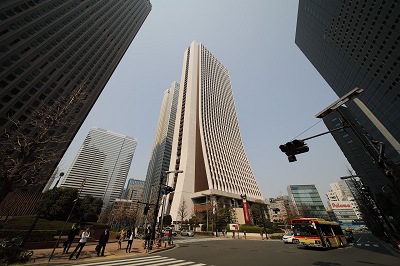
Sompo Japan Building
This skyscraper belongs to Sompo Japan Insurance, a large insurance group. Completed in 1976, it is one of Shinjuku's oldest skyscrapers, with an architecture that recalls the shapes of Chicago's Chase Tower. The building is entirely occupied by offices, with the exception of an art museum on the 42nd floor.
Seiji Togo Memorial Sompo Japan Nipponkoa Museum of Art
(opening hours 10-18, closed on mondays)
This museum is located on the 42nd floor of the Sompo Japan Building.
The permanent collection consists mainly of the works of the Japanese painter
Seiji Togo (1897–1978), but there are also some Western works. The most famous are one of the
Sunflowers by
Van Gogh,
L'Allée des Alyscamps, Arles by
Gauguin and
Pommes et Serviette by
Cézanne.
The museum also hosts several temporary exhibitions throughout the year,
you can check the calendar here.
From some windows at the museum entrance, you can also enjoy a panoramic view of the east Shinjuku side, with the Tokyo Sky Tree in the distance.
Part of Detective Conan's 19th film story (
Sunflowers of Inferno) takes place in this museum.

Nomura Building
Another of the "old" skyscrapers of Shinjuku, completed in 1979. It is located next to the Sompo Building.
The basement of the skyscraper (floors B1, B2) is home to many inexpensive restaurants, as well as a curious Daiso Biz (100 yen shop designed for workers).
The top two floors (49th and 50th) house several restaurants with breathtaking panoramic views (list of restaurants). In a corner of the 50th floor there are also some windows to enjoy the view from above free of charge.
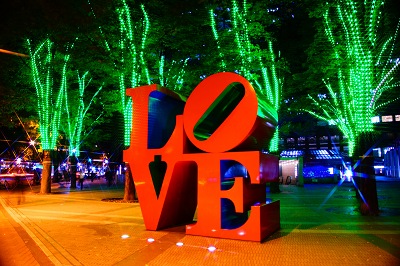
Shinjuku I-land Tower
The building itself has nothing interesting and inside there are only offices. At the base of the skyscraper, however, there is a suggestive circular courtyard, with several shops and restaurants. The area is also scattered with various contemporary works of art. The most famous is undoubtedly a sculpture called "Love" by the american artist Robert Indiana. For the complete list of the works of art, you can check here.
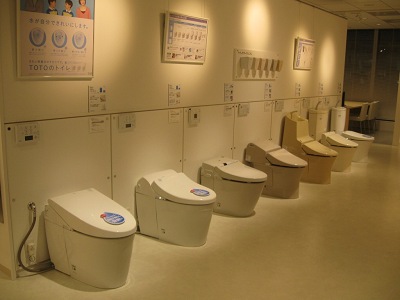
JR Minami Shinjuku Building e Toto Showroom
An anonymous skyscraper in the southern part of Shinjuku. It is worth to be mentioned only for a Toto showroom inside, the Japanese giant of electronic toilets that make all tourists fall in love when they visit Japan. The company also produces many other items for bathroom décor, such as hyper-technological showers and bathtubs. You can see them all in their showroom on the 7th and 8th floor of this building.
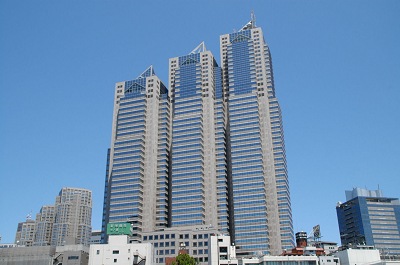
Shinjuku Park Tower
Shinjuku's second tallest skyscraper, completed in 1994 and designed by Kenzo Tange. It has a very particular shape made up of three connected and growing in height towers.
The top floors of the building (39F-52F) house one of the most luxurious hotels in Tokyo, the Park Hyatt Tokyo. The reception is located on the 41st floor. On the 52nd floor there is an amazing rooftop restaurant, New York Grill, that became famous after being used for the shooting of the film Lost in Translation (2003, with Bill Murray and Scarlett Johansson). If you are looking for a romantic and unforgettable dinner, this restaurant is a great choice.
The rest of the building is occupied by offices, except for the first floors where there are some shops.
On the ground floor there is also a showroom of Tokyo Gas, the company that manages the gas network of the region.
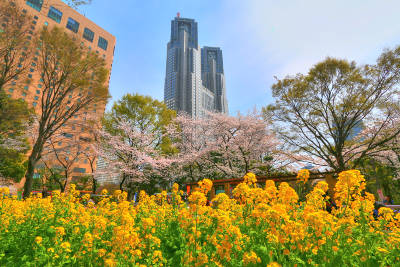
Shinjuku Central Park
A public park behind the large skyscrapers of the Shinjuku business district, located just behind the towers of the Tokyo Metropolitan Government Office and the Shinjuku Park Tower housing the Park Hyatt hotel. Not to be confused with the much more famous Shinjuku Gyoen, located elsewhere.
Inside the park there is an artificial waterfall and a small Shinto shrine (Kumano Shrine).
During the day, and particularly around lunch time, the park is filled with workers in suits who come here to eat their own bento and relax a moment before returning to work. During the night, this park is used by many homeless people who come to sleep here. Early in the morning, with great discretion, they take away all their stuff, and come back the next evening.
South Shinjuku - South and New South exit of Shinjuku station
South of Shinjuku station there is not much more interesting to see. Right in front of the South exit you can see the
Shinjuku bus terminal , and the
NEWoMan shopping center next to it, and yet another mega department store,
Takashimaya Times Square, with a nice pedestrian area nearby.
Further south there is only the
Shinjuku Gyoen, a famous public park. If you keep going south, in 20 minutes walk or 2 stops of Yamanote Line, you reach other famous areas of Tokyo,
Harajuku e Omotesando.
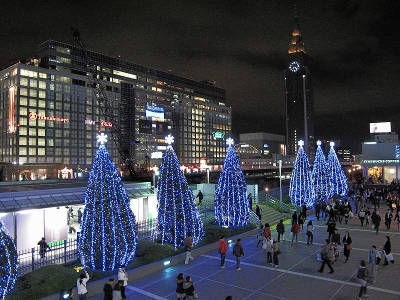
Southern Terrace e Takashimaya Times Square
The Shinjuku Southern Terrace is a wide avenue, about 300 meters long, that starts right in front of the South Exit of Shinjuku station and ends in front of the Odakyu Century Southern Tower hotel. It is one of the largest pedestrian areas in Shinjuku. Along the way there some shops, cafes and restaurants with outdoor seats. The area becomes one of the most popular in Tokyo to admire the Christmas lights that are set up in the winter months. From this avenue, you can also continue the walk on a large overpass crossing all the railway tracks and arriving at Takashimaya Times Square, a huge department store on the other side. From the overpass, it is possible to observe the endless comings and goings of trains to and from the busiest station in the world.
Inaugurated in 1996, Shinjuku's Takashimaya department stores have a total of 15 floors (the last 3 floors are full of restaurants). Inside there is also a branch of Tokyu Hands and a bookstore (Kinokuniya), one of the best places to buy books in English in Tokyo.
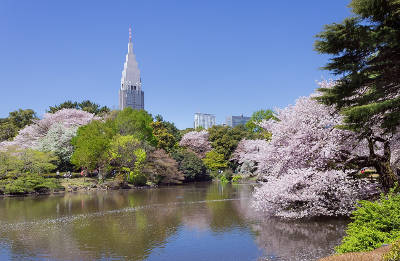
Shinjuku Gyoen
A large park in the middle of Tokyo's "chaos", a few minutes walk from Shinjuku Station. The park occupies a very large area, and is a perfect place for all those who want to escape from the city and enjoy a few hours of relaxation and serenity.
North Shinjuku
There is no exit from Shinjuku station called "north exit". The northernmost exit is the
East Exit. The district of
Kabukicho is located just north of the station, a few minutes from the east exit.
Moving away from the station in a northerly direction, there are two other interesting areas: the
Korean district of Okubo and the
university district of Takadanobaba.
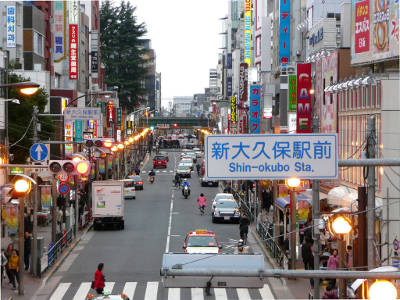
Okubo (Koreatown)
Okubo is the Korean district of Tokyo. A common nickname of this area is indeed Koreatown.
The area, in addition to being a residential area for many Korean immigrants in Japan, and lately many Chinese, is characterized by the presence of many Korean food shops and restaurants. A corner of Korea in central Tokyo.

Takadanobaba
Takadanobaba is a very lively neighborhood, two stops from Shinjuku along the JR Yamanote line. On foot it takes about half an hour, crossing some interesting areas (Kabukicho and Okubo).
In this district there is one of the largest and most prestigious universities in all of Japan, the Waseda University, and other lesser known universities. For this reason, the neighborhood is very popular among university students. Like all students in the world, even the Japanese have to deal with being penniless and prefer low-cost food and entertainment. At Takadanobaba you will find plenty of restaurants, bars, izakaya and karaoke where you can eat, drink and have fun at a low price. In the area there are also several restaurants, also very cheap, of Southeast Asian cuisine.
Try to go around the station on the evening of any weekend, you will always find some groups of young students trying to support the drunk student unconscious on the ground of the day.
Finally, two interesting facts are linked to Takadanobaba:
- Osamu Tezuka, one of the most famous mangaka in Japan and the father of Astroboy (Mighty Atom in Japanese), was born in Takadanobaba in 1928 and lived there all his life until his death in 1989. Astroboy himself, a character who comes from the future in the series, is said to have been born in 2003 in Takadanobaba. In honor of Tezuka and Astroboy, you can find several murals around the neighborhood. Furthermore, the JR Takadanobaba station jingle is the theme of the Astroboy anime (each JR station in Tokyo has its own jingle).
- J.J. Abrams, director of the film Star Wars VII: The Force Awakens, for some strange reason was struck by the name Takadanobaba during a trip to Tokyo, and declared in an interview that he was inspired by that for the name of the planet Takodana in the movie.
Staying in Shinjuku
Shinjuku is one of the best neighborhoods to stay during a trip to Tokyo.
According to many, it is even the best choice you can do. The reasons are, on the one hand, the very strategic position from which you can easily and quickly reach most of the other tourist areas of the city. On the other, the nightlife and the number of things to do, 24 hours a day, that will never make you bored and that allow you to stay out until late in the night but just a few minutes on foot from your hotel.
Read more about hotels, capsule hotels, hostels, love hotels and hotels with panoramic views recommended in Shinjuku
How to get to Shinjuku
Shinjuku station is obviously the main point of arrival to get to most of the attractions of the neighborhood.
Served by over 12 lines of 5 different railway companies, getting to Shinjuku station is not much of a problem, whatever your starting point.
Shinjuku station is also directly connected to
Narita airport through the
Narita Express (
further information here).
The main problem of Shinjuku station is to get around inside this station, given its enormity and the crowd of people at any time of the day. Instead of instinctively following the directions for the first "exit" you see, try to take the right exit, otherwise you might get lost. For more information, we recommend taking a look at the
Guide of Shinjuku station.
All the places mentioned on this page are within walking distance of Shinjuku station, which is a great starting point for visiting the entire neighborhood. However, in the neighborhood there are several small stations that could be useful if you are heading to a particular place:
- Shinjuku Sanchome station (Tokyo Metro Marunouchi Line, Tokyo Metro Fukutoshin Line, Toei Shinjuku Line), located in the shopping area of East Shinjuku, a few meters from the gay area of Nicho;
- Shinjuku-gyoemmae Station (Tokyo Metro Marunouchi Line), located a few meters from one of the entrances to Shinjuku Gyoen;
- Tochomae station (Toei Shinjuku Line), located in the skyscraper district of West Shinjuku, under the Tokyo Metropolitan Government Building;
- Shin-Okubo station (the station next to Shinjuku along the JR Yamanote line), located right in the heart of Okubo, the Koreatown of Tokyo;
- Takadanobaba station (JR Yamanote Line, Seibu Shinjuku line, Tokyo Metro Tozai Line), located in the heart of the university district of Takadanobaba.
Map of Shinjuku, Tokyo
Guided tours, activities and other things to do
If you are planning a trip to Japan and you want to do something more than just visiting famous places and monuments, we suggest you to use
Rakuten Travel Experiences.
How to use Rakuten Travel Experiences
Rakuten Travel is a very useful website to
enrich your travel experience, especially if you are going solo or it's your first time in Japan.
Because of the language barrier (and more), in Japan it is very difficult to interact with the locals and to get off the tourist track.
Thanks to Rakuten Travel you can find a lot of interesting and sometimes unique
guided tours and activities all over Japan (and not only in Japan), that you would otherwise never be able to enjoy.
But there's more: on Rakuten Travel you can also
buy tickets for several famous attractions, events, transportation and other useful services for tourists. Last but not least, you can
reserve a table in hundreds of restaurants.
Some examples
Take a look at Rakuten Travel Experiences
You may also be interested in

 Studio Alta, in front of the exit exit of Shinjuku station, it is one of the most popular meeting points in Shinjuku
Studio Alta, in front of the exit exit of Shinjuku station, it is one of the most popular meeting points in Shinjuku



 Shinjuku's skyscraper area from above (credits)
Shinjuku's skyscraper area from above (credits)

